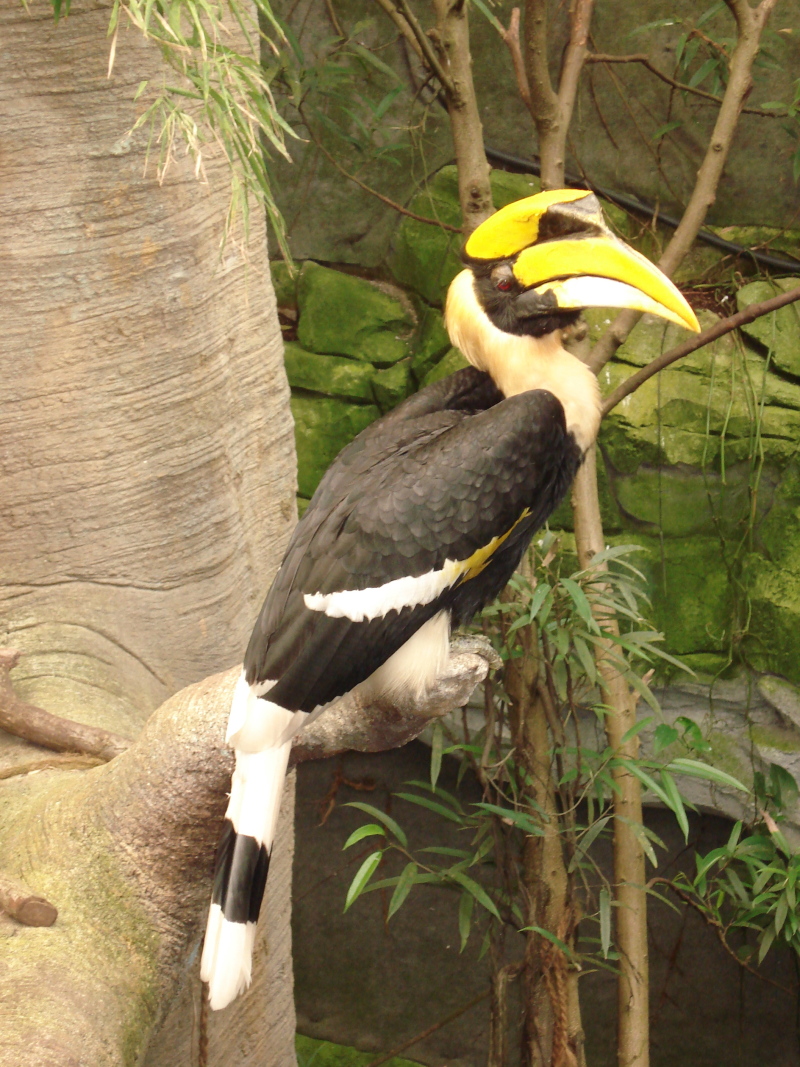Distinguishing features
It is the heaviest, but not the longest, Asian hornbill. The most prominent feature of the hornbill is the bright yellow and black casque on top of its massive bill. The casque appears U-shaped when viewed from the front and the top is concave with two ridges along the sides that form points in the front.
Females are smaller than males and have bluish-white instead of red eyes although the orbital skin is pinkish. Like other hornbills, they have prominent 'eyelashes'. The back of the casque is reddish in females while the underside of the front and back of the casque is black in males. The male spreads the preen gland secretion which is yellow onto the primaries and bill to give them the bright yellow colour.
The commissure of the beak is black and has a serrated and worn edge with age. (Wikipedia)
Size
- Up to 130 cm (Length of specimen)
Weight
- Up to 4 kg
Wingspan
- Up to 152 cm
Synonyms
Interesting facts
- The casque is hollow and serves no known purpose although they are believed to be the result of sexual selection. Male hornbills have been known to indulge in aerial casque butting, with birds striking each other in flight. (Wikipedia)
Distribution
Distribution and habitat preferences
Great Hornbills are found in the forests of Nepal, India, Mainland Southeast Asia and Sumatra, Indonesia.
The distribution of the species is fragmented over its range in South and Southeast Asia. In South Asia they are found in a few forest areas in the Western Ghats and in the forests along the Himalayas. Their distribution extends into Thailand, Burma, Malaya, and Sumatra. A small feral population is found in Singapore. Their habitat is dense old growth (unlogged) forests in hilly regions. They appear to be dependent on large stretches of forest unlike many of the smaller hornbills. (Wikipedia)
Diet
In the wild, the Great Hornbill's diet consists mainly of fruit. Figs are particularly important as a food sources. They obtain the water that they need entirely from their diet of fruits. They are important dispersers of many forest tree species. They will also eat small mammals, birds, small reptiles and insects. (Wikipedia)


